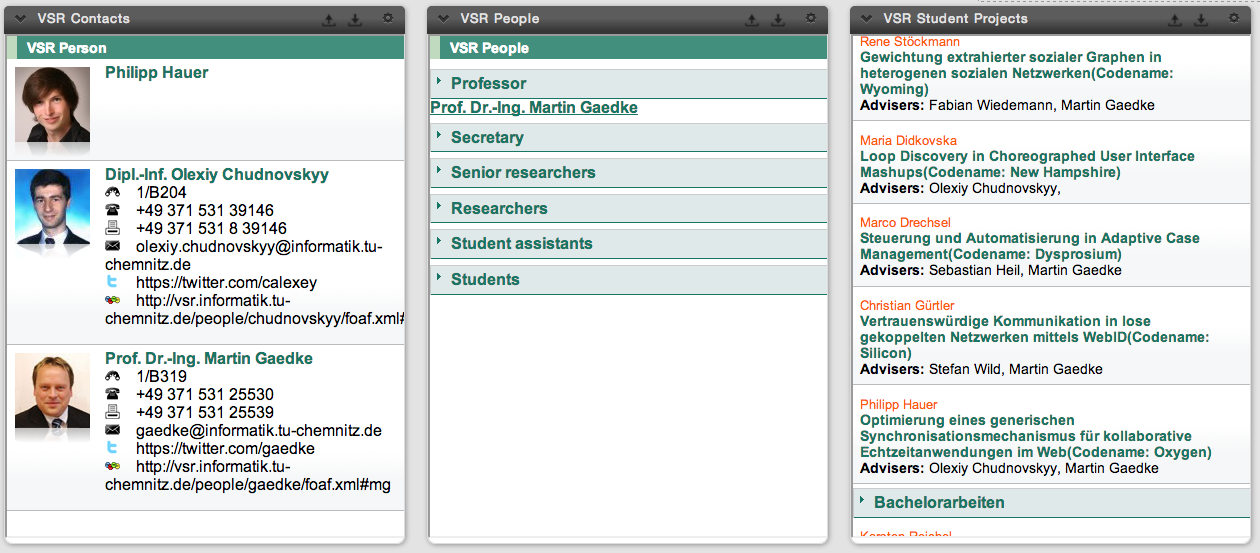
Inter-Widget Communication: The Implicit Wiring Approach
Introduction

In the context of EU FP7 project OMELETTE, we have been working on finding an appropriate tradeoff between complexity and end user suitability of the inter-widget communication configuration. The results of this work were incorporated into a dedicated mashup environment with IWC implemented on the basis of a publish-subscribe messaging pattern (pub/sub).
In contrast to other approaches, where mashup developers have to deal with abstract control flow and data flow models, the border between design and execution phases in OMELETTE is virtually non-existent from an end user perspective. Mashup composition happens at run-time and its results are immediately evident to users in their browsers. One distinct feature of OMELETTE is that users are not required to establish connections between widgets explicitly. Communication, i. e., data and control flows emerge as soon as widgets are put together in a workspace. Technically, this is achieved by employing the event- driven pub/sub messaging pattern: widgets autonomously subscribe and publish messages on different communication channels, known as topics. A message bus running within the browser takes care of delivering messages to all interested parties, i. e., widgets subscribed to the corresponding topics. Depending on the semantics of transmitted messages, this may lead to the invocation of certain functions, the synchronization of internal states, or changes in the UI.
Screencasts
Further Readings
Olexiy Chudnovskyy, Stefan Pietschmann, Matthias Niederhausen, Vadim Chepegin, David Griffiths, Martin Gaedke. Awareness and Control for Inter-Widget Communication: Challenges and Solutions (Conference Paper) Proceedings of 13th International Conference on Web Engineering (ICWE2013). Aalborg, Denmark. July 08-12, 2013

